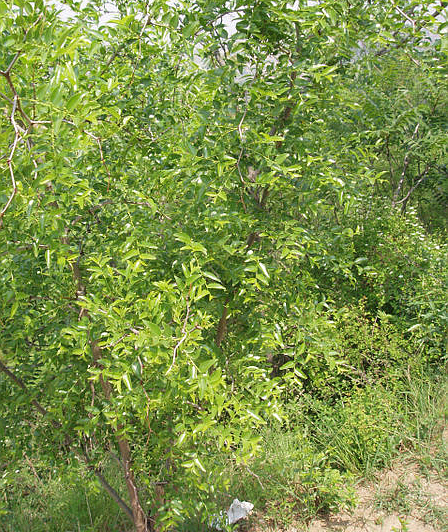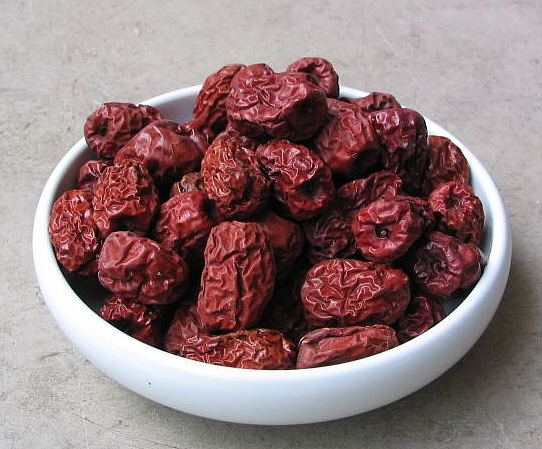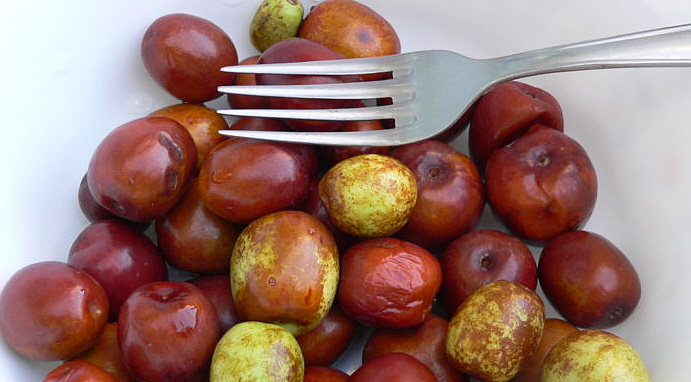

Zitierweise / cite as:
Carakasaṃhitā: Ausgewählte Texte aus der Carakasaṃhitā / übersetzt und erläutert von Alois Payer <1944 - >. -- Anhang A: Pflanzenbeschreibungen. -- Zizyphus jujuba Mill. -- Fassung vom 2007-06-27. -- URL: http://www.payer.de/ayurveda/pflanzen/zizyphus_jujuba.htm
Erstmals publiziert: 2007-06-27
Überarbeitungen:
Anlass: Lehrveranstaltung SS 2007
©opyright: Dieser Text steht der Allgemeinheit zur Verfügung. Eine Verwertung in Publikationen, die über übliche Zitate hinausgeht, bedarf der ausdrücklichen Genehmigung des Verfassers
Dieser Text ist Teil der Abteilung Sanskrit von Tüpfli's Global Village Library
WARNUNG: dies ist der Versuch einer
Übersetzung und Interpretation eines altindischen Textes. Es ist keine
medizinische Anleitung. Vor dem Gebrauch aller hier genannten Heilmittel wird
darum ausdrücklich gewarnt. Nur ein erfahrener, gut ausgebildeter ayurvedischer
Arzt kann Verschreibungen und Behandlungen machen!
Falls Sie die diakritischen Zeichen nicht dargestellt bekommen, installieren Sie eine Schrift mit Diakritika wie z.B. Tahoma.
Verwendete und zitierte Werke siehe: http://www.payer.de/ayurveda/caraka0001.htm

Abb.:
Jujube
[Bildquelle. Wikipedia]

Abb.:
Getrocknete Jujuben aus Korea
[Bildquelle. Wikipedia]

Abb.:
Frische Azufaifas aus Almería in Südspanien
[Bildquelle. Wikipedia]
Drury:
"Zizyphus jujuba (Lam.) Do.
- Jujube-tree, Eng.
- Elendie, Tam.
- Perintoddali or Elentha, Mal.
- Reygoo, Tel.
- Beyr, Duk.
- Kool, Beng.
Description.—Small tree, 16 feet; stipulary prickles short, in pairs or solitary, often wanting, especially on the young branches; leaves elliptical or oblong, sometimes coarsely toothed at the apex, serrulated, acutish or obtuse or slightly cordate at the base, upper side glabrous, under side as well as young branches and petioles covered with dense tawny tomentum; cymes sessile or very shortly peduncled; ovary 2-celled; styles 2, united to the middle; drupe spherical, yellow when ripe; nut rugose, 2-celled; flowers greenish yellow. Fl. Aug.—Oct.— W. & A. Prod. i. 162.— Wight Icon. t. 99.—Roxb. Fl. Ind. i. 608.—Rhamnus jujuba, Linn.—Rheede, iv. t. 41.-------Peninsula. Bengal. Travancore.
Economic Uses.—The fruit is eatable. It is sweet and mealy. There is a variety of the tree which produces a long fruit, which is excellent to the taste, called in Bengal Nari-kela-kool. Of the former the wood is tough and tolerably strong, and is used in ordinary constructive work. The bark is used by tanners.—(Ainslie. Stewart's Punj. Plants.) The timber is good for saddle-trees and ornamental work, as well as for sandals. It is close and even-grained. A kind of kino is procured from the bark.—Beddome, Flor. Sylv. t. 149.
This is the most common species in Northern India; but in gardens there is a variety or distinct species with oblong fruit which attains a considerable size, and when grafted yields a pleasant-tasted fruit called Bar, which may be styled the Indian jujube. The fruit of the wild kind is dried and powdered, as was done with the lotus of the Lotophagi. This powder is called in Hindoo, Berchoonee. This species bears a kind of lac in Northern India, called Beree-ki-lakh, which is used for dyeing leather, cotton, and silk. Some of the species of this order are said to possess astringent leaves, and some are remarkable for the goodness and denseness of their wood.—Royle."
[Quelle: Drury, Heber <1819 - 1872>: The useful plants of India : with notices of their chief value in commerce, medicine, and the arts. -- 2d ed. with additions and corrections. London : Allen, 1873. -- xvi, 512 p. ; 22 cm. -- s.v.]